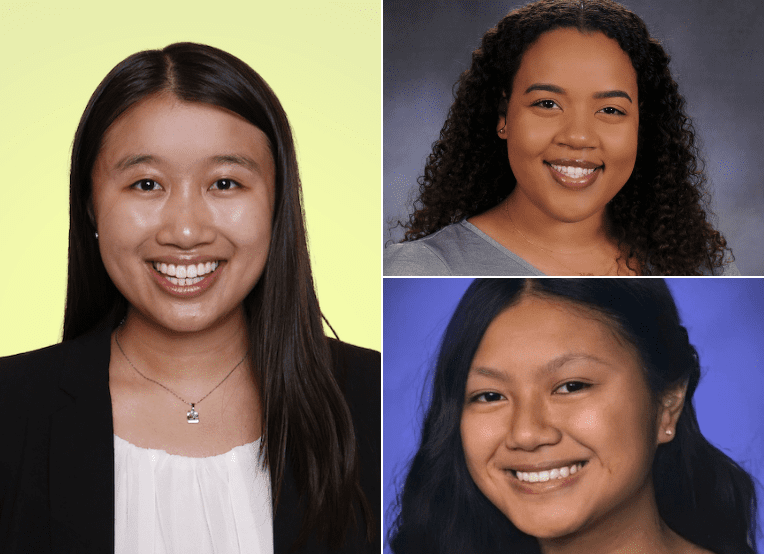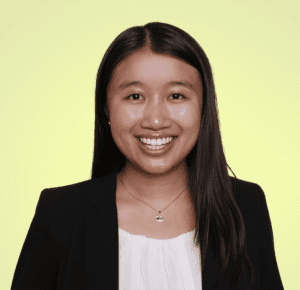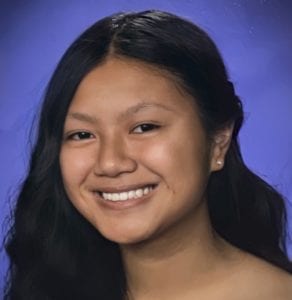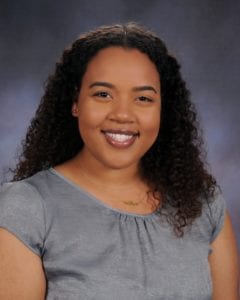Haas Voices is a new first-person series that highlights the lived experiences of members of the Berkeley Haas community.

The myth of the “model minority” stereotypes Asian Americans as a polite, law-abiding, hard-working group that’s overcome discrimination to achieve educational and career success through drive and innate talent—typically in math and science.
The myth defies the fact that the Asian American community is diverse socioeconomically and culturally. The perception of the Asian community as a monolith is also the reason why people remain mystified by anti-Asian racism, says UC Berkeley alumna Hua Hsu, who wrote in the New Yorker recently that the “needs and disadvantages of refugee communities and poor Asian Americans have been obscured.”
Recently, several high-profile incidents of violence against Asians have shone a spotlight on long-simmering anti-Asian racism, and also highlighted the way the “model minority” myth has been used as a wedge between Black and Asian communities. We talked to two undergraduate students who are Chinese American, along with a recent undergraduate alumna who is Black, about what the myth means to them and how it impacts their lives.
The students also created a list of Asian American resources on campus and beyond.
Our interviewees:
Erinn Wong, BS 21, who grew up in Sacramento. Wong is a queer Chinese American; her parents are from Hong Kong.
Vivian Feng, BS 24, a freshman in the Berkeley Haas Undergraduate Global Management Program who grew up in Oakland. Feng is Chinese American and a graduate of Oakland High School.
Mia Character, BS 20, a native of Gretna, Louisiana, grew up in Redlands, Calif. She is now a recruiting coordinator at Robinhood via contract with AppleOne.
When did you first hear the term “model minority?”

Erinn Wong: I first heard the term back in high school. I thought it meant to stereotype Asians as hardworking, good at math and education—that somehow we work hard and we succeed and it was very much aligned with the meritocracy myth. I really bought into that and internalized it growing up, believing that if you work hard, you’ll be successful. It wasn’t until college that I was able to put two and two together and recognize that these stereotypes are rooted in anti-Blackness and white supremacy to show that Asian Americans are the “model minority” and to situate Black Americans as the “problem minority.”
Mia Character: It was probably when I first moved to California from the South that I was first introduced to Asian people and to the stereotypes. I don’t think anyone within my inner circle or family perpetuated these stereotypes, but I did hear them in the media or at school with jokes the kids at school would tell. From early on, I always thought of Asian American students not as competition, but as the ones to emulate because they were really good in their classes and played all these instruments and seem to have it all together. It wasn’t until I got to Cal that I really started paying attention to and listening to other Asian American folks that I learned how dangerous the model minority myth is.
It wasn’t until college that I was able to put two and two together and recognize that these stereotypes are rooted in anti-Blackness and white supremacy to show that Asian Americans are the “model minority” and to situate Black Americans as the “problem minority.” — Erinn Wong, BS 21
Vivian Feng: I’ve been aware of it for so long, but I didn’t really put a name to it. When I first heard it, I just thought of the stereotypical views of how Asians are better at math and internalized the belief that if I worked hard enough, I would be able to achieve success. But I never really talked about it until high school, when I fully embraced my identity.
How did your thoughts about the model minority change once you got to Berkeley?
Mia: I think it wasn’t until I got to Cal that I realized that the model minority myth impacts the Asian-American communities a lot more than just a simple “Oh, you’re good at math.” It’s a socioeconomic issue and it’s very systemic. At Cal, I started listening and paying attention and I was able to learn and grow in my understanding. There are groups within the Asian-American community that are disproportionately impacted by things like colorism that I didn’t know about in high school. Everybody has a different experience in America and all minorities face different stereotypes. I think my time at Cal has made me a lot more comfortable having conversations with my Asian friends and asking how they’re doing and how they have been impacted by racism and the systems of oppression that America is built on.

Vivian: It affected me mentally before even going into Berkeley because I felt like I had to go to Cal to meet expectations. In the end I chose Berkeley because it was the only college that I applied to with a major that lined up with my interests of international development, cross-cultural experiences, and traveling. When I got my acceptance letter, I had some doubts, but I ultimately felt this need to pursue my passion. Being at Haas as a freshman is even more drastically different because most people typically get in their junior year. You have this imposter syndrome. People internalize the model minority myth and say, “You got in, you’re smart. You can get through it, you’ll pass your classes.” But in reality, I don’t feel like that because I am a first-generation college student who went to an under-resourced high school. I do not feel prepared, and I’m literally in a system that wasn’t necessarily designed for me to succeed.
People internalize the model minority myth and say, “You got in, you’re smart. You can get through it, you’ll pass your classes.” But in reality, I don’t feel like that because I am a first-generation college student who went to an under-resourced high school.— Vivian Feng, BS 24
Erinn: Coming to Cal was my first time experiencing being with a larger East Asian population in school. I feel like people lump all Asian Americans together. I went to high school with, and was classmates with, many Hmong students, who are severely underrepresented in higher education and other areas, not to mention Pacific Islanders and Native Hawaiians. The model minority myth is really destructive. My classmates who were Hmong would either go to community college or work to support their families or go into the military and a few would go to a state college.
I also learned here at Berkeley that the identity and label “Asian American” had radical roots. It was coined by graduate students Yuji Ichioka and Emma Gee, who formed the Asian American Political Alliance in 1968 at UC Berkeley to bring together Chinese, Filipino, and Japanese students to stand in solidarity. They fought for the self determination and collective liberation of Asian Americans and Third World Peoples, and in the Third World Liberation Front strikes, which led to establishing Ethnic Studies majors at colleges across the U.S. Asian American was a radical label then because it brought together a multi-ethnic, multi-class, and multi-generational coalition of Asians and shifted away from the “Oriental” label. To call yourself an Asian American at the time was a political statement. It’s wild now that Asian American has lost its radical, political roots because of the way it has been wielded by the white mainstream and model minority myth, and then internalized by all of us, to homogenize, invalidate, and erase our struggles and solidarity with each other and other communities of color.
How does the model minority myth hurt you personally?
Vivian: I’m told I’m too aggressive, but I don’t like being quiet when I feel the urge to speak up. I wasn’t engaged politically when I was younger because I had this perception that politics was only for white people. It was just ingrained into my life. Growing up, whenever I brought up politics with my mom, my thoughts were dismissed. It felt like I was talking to a wall. Eventually, I realized that my mom’s lack of political engagement is because of her lack of education while being in survival mode. Many East and Southeast Asians in my community have to worry about their basic necessities before even thinking about studying. As I became more knowledgeable about the model minority myth, I was always told that I was “too political” among my peers.
However, this fueled my desire to stop being a bystander and conforming to societal standards. Our reality is that the model minority myth hurts everyone as it perpetuates white supremacy.
Erinn: I got feedback at two tech corporate internships that I needed to be more confident, even though I thought the way I presented myself was fine, despite struggling with imposter syndrome and confidence at times. At the same time, in other spaces I’d get feedback that I was too strong and too aggressive, something East Asian women face. You’re expected to be submissive, not speak up, and just do what you’re expected to do. And when you do speak up and contribute, you’re seen as too strong, aggressive, bossy, a bitch. It’s the long-standing East Asian stereotypes of East Asian women being docile and exotic, while also being the dragon lady or tiger mom. The term also impacts how much space I take up, because as an East Asian woman, I’m expected to not take up space. The model minority myth compounds that by making me think, “Oh, maybe my struggles are not as marginalized as another person of color and I cannot take up as much space.”
You’re expected to be submissive, not speak up, and just do what you’re expected to do. And when you do speak up and contribute, you’re seen as too strong, aggressive, bossy, a bitch. — Erinn Wong
I’ve heard both East and South Asians say ‘we’re not really people of color,’ which is not true. I think it’s the model minority myth that creates this feeling that we’re not “POC enough.” But something that helped was what Haas alumna Michelle Kim said to me: that we need to think of ourselves as co-strugglers with Black people and other people of color, not as perpetual allies because that’s a white model of allyship. And when I really sat with that and made the connections to how the model minority myth makes me feel shame and guilt for “taking up space,” I saw how it’s white supremacy that makes me feel like I can’t take up space alongside other people of color because white supremacy creates and thrives from scarcity, that there is only enough space for one marginalized group to share their struggles and to thrive.

Mia: As a Black person growing up in a state with a fairly large Asian American population, the model minority myth had an adverse impact on me. It was created to pit Asian American and Black people against one another by saying, “if Asian people can thrive in America and be exceptional and thrive in their roles in our capitalistic society, then Black people should have been able to do it, too.” But if you take a step back and look at the different histories, they aren’t comparable. They don’t need to be compared and contrasted because we faced different kinds of oppression that all stem from white supremacy. Growing up and not understanding this, it was easy to feel like you have to be just as “perfect” to be worthy of respect—that you have to get the best grades, be a part of multiple clubs, and go to the best universities to prove that as a Black person you are worthy.
Growing up and not understanding this, it was easy to feel like you have to be just as “perfect” to be worthy of respect—that you have to get the best grades, be a part of multiple clubs, and go to the best universities to prove that as a Black person you are worthy.—Mia Character, BS 20
How do you think that the model minority myth hurts your community?
Erinn: The model minority myth has real impacts on the Asian community. For example, in tech, East and South Asians are overrepresented in certain departments. But as a whole, we don’t hold a lot of power, which is another reminder that under/overrepresentation is different from marginalization. We are least likely to be promoted to management, and there’s still a “bamboo ceiling.” This can be attributed to people internalizing the model minority and stereotypes of how we’re supposed to just shut up and work hard, or that somehow we don’t have “leadership potential and qualities,” communication skills, or “executive presence.” Southeast Asians, Native Hawaiians, and Pacific Islanders are severely underrepresented in tech, and data on Asians is rarely disaggregated.
Beyond tech, Southeast Asians are systemically impacted by deportation, ICE raids, and poverty, Chinatown neighborhoods and Asian-owned businesses have been struggling in this pandemic, and Filipino nurses, Pacific-Islanders, and Native Hawaiians have had some of the highest COVID-19 mortality rates. The model minority myth ignores our struggles and our communities lack sufficient resources and attention. And I learned last year that less than 1% of philanthropic funding goes to Asian American Pacific Islander causes, which proves the model minority myth is at work again.
What are your thoughts about how the myth is connected to the recent anti-Asian violence?
Mia: This was happening long before Trump, but violence against Asians is never talked about. In some ways I think that’s also part of the model minority myth. We’re taught that because Asian Americans are the “model minority,” they can’t face racism and the violence that comes with it.
Vivian: It’s nothing new. Historically, many fail to recognize xenophobic practices, such as The Chinese Exclusion Act, Japanese internment camps, as well as the murder of Vincent Chin. Asians are never really talked about in our history classes, and if it is, it’s always about East Asians from a divisive Eurocentric perspective. Now, the main difference is that anti-Asian violence is captured on camera and that more people are open to talking about it in the younger generation. Social media has changed everything in the way we approach politics. The elderly, especially Asians, are either scared or there’s a language barrier and they won’t report the incidents. And at least in Oakland, the violence has happened for as long as I can remember. I know so many people who have been affected by the violence before the pandemic and it’s a shame that it wasn’t recognized until now.